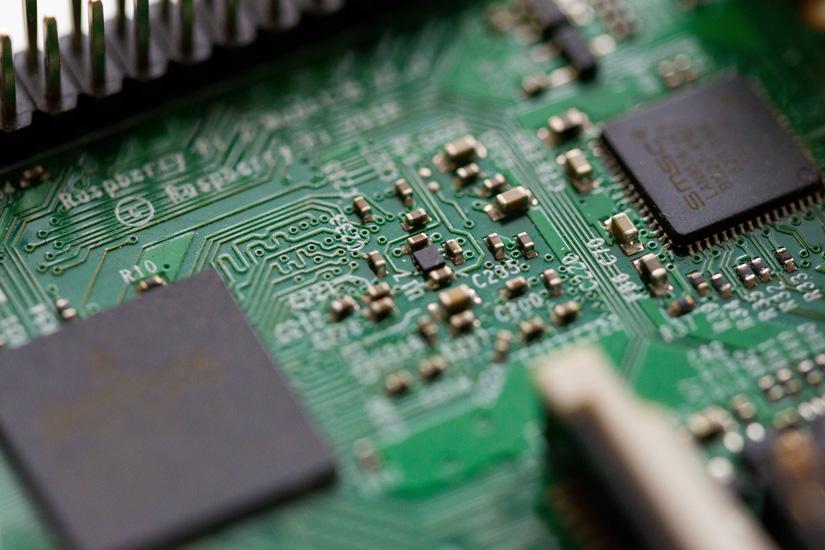
Photo credit: Chris Ried
Imagine a pocket-sized device that can conduct laboratory-scale testing in an instant. Now imagine that device applied to the medical industry, affording a revolution in diagnosis and health monitoring.
Associate Professor Dongbin Wei, from the UTS School of Mechanical and Mechatronic Engineering, and Professor G.L. Samuel from the Indian Institute of Technology Madras (IITM), are developing ways to make that a reality, by creating a device that is a one-stop-shop for testing blood.
“We call it a ‘lab on a chip’,” Dr Samuel said. “It’s not a single test device, it’s a whole laboratory. So we can quickly take a sample and get the results right there and then to assess the patient’s condition.”
The device, created as a prototype in the UTS Protospace 3D printing facilities, allows researchers to conduct multiple blood tests using only a few drops of blood. This promises less burden on patients requiring blood testing.
At the size of a credit card, the chip filters blood droplets into several chambers, allowing numerous tests to be conducted simultaneously.
The chip is designed to be disposable, making it an affordable and accessible option for many. It should prove particularly useful in the case of epidemic diseases.
“If some sort of plague occurs, and you want to quickly check what the disease is without risk of it spreading, it saves us having to bring blood samples to a city to test and see the results,” Dr Samuel said.
Current technology limitations have made building such a device challenging. The demanding micro-additive manufacturing process is something most 3D printers are yet to achieve. Yet Dr Samuel and Prof Wei are finding ways around that.
“Most 3D printers can’t deal with very fine details in the fabrication process. That’s why we proposed a collaborative research project looking into micro-additive manufacturing. If our research is successful, it can be used to make these concepts accessible, to bring them to life,” Prof Wei said.
At present, the Micro-Electrical-Mechanical (MEMS) technology is used to make the moulds for biomedical devices.
“It involves many steps of production and the component parts need to be made separately and bonded. But if you can do it with 3D printing, we can print the device in one step. It would be fast and the cost would be much cheaper,” Dr Samuel said.
For Dr Samuel and Prof Wei, initiating a collaborative research project of this scale was as simple as reaching out through the UTS Key Technology Partnerships (KTP) network.
“An email came to our faculty through the international office. I saw it and when I found out that micro-manufacturing is the research area of Professor Wei at UTS, I sent my profile and outlined my previous work in an email,” Dr Samuel said.
Under the KTP Visiting Fellow program, Dr Samuel and Prof Wei understand the value of working face-to-face with their research colleagues at UTS.
“The sharing of knowledge, students and facilities is the primary benefit [of the collaboration],” Dr Samuel said. “Looking from the manufacturing and materials side, it allows us to solve problems and issues we wouldn’t have overcome alone.”
Collaborating at UTS also allows the two academics to complete their work in a shorter timeframe.
“These days you can use Skype to communicate but everyone is too busy. It always turns out that no one has the time to talk. For people to be here in person, it makes it very convenient,” Prof Wei said.
Byline
Annabel Jeffery

